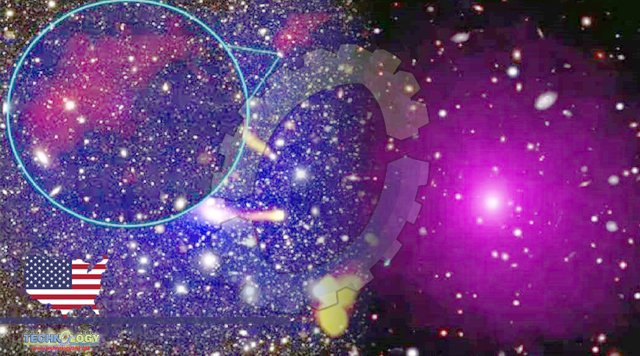Fossil remains of a black hole’s past feeding frenzy have been discovered deep within one of the largest galaxy clusters in our sky.

Astronomers also spotted a plasma shock wave that defies physics, and a halo of radio energy within the same galaxy cluster. The cluster Abell 3266 lies 800 million light-years away and stretches across 300 million light-years of sky in the southern constellation of Reticulum. An international team of astronomers, led by Christopher Riseley of the University of Bologna in Italy, studied the cluster in detail using the powerful Australian Square Kilometre Array Pathfinder radio telescope in outback Western Australia, and the smaller Australia Telescope Compact Array in Narrabri, New South Wales. Galaxy clusters are some of the biggest and most dynamic objects in the universe, said astrophysicist and co-author Tessa Vernstrom of the University of Western Australia.
“It’s where you’ve got the interplay of dark matter and galaxies and a lot of different physics going on,” Dr Vernstrom said. The cluster has a number of active galaxies, with supermassive black holes at their heart sending out massive jets of energy. One galaxy in the bottom right-hand corner stands out. Instead of having big jets shooting out from its centre, they are bent around. The curved jets are caused by the movement of the galaxy in the cluster. “So it’s kind of like a pressure wind that pushes the jets back,” Dr Vernstrom said. “It can tell you about the dynamics going on and how everything is moving around each other.”
Source: This news is originally published by abc.net.au